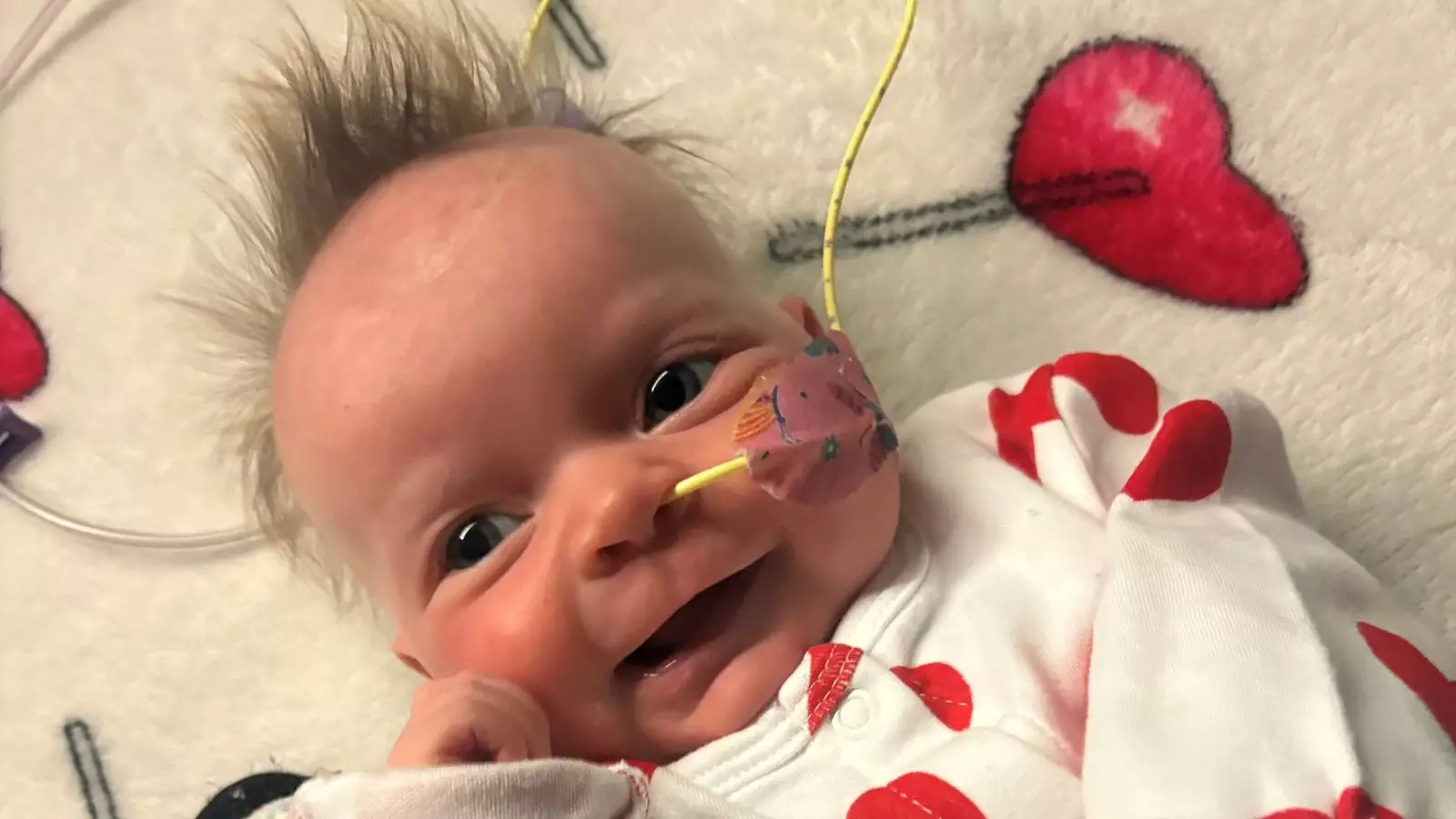In a poignant narrative that resonates deeply with the challenges faced by many families, a mother from Newport, South Wales, has bravely opened up about her daughter’s battle with a rare blood disorder known as hemophagocytic lymphohistiocytosis (HLH). This condition is not just a medical term; it represents an arduous journey of diagnosis, treatment, and the activism it inspires. Three-month-old Dolcie-Mae Edwards-Raymond was initially thought to be suffering from a viral infection when she began to show signs of illness, but what followed was a revelation that shone a stark light on the fragility of life and the urgency of medical intervention.
As Dolcie-Mae’s loving parents, Courtney-Jade Edwards and Ashley David Raymond, navigated the tumultuous waters of their daughter’s health crisis, they discovered that HLH is a devastating immune deficiency disorder. In this condition, the body’s own immune system goes haywire; white blood cells intended to protect and heal, instead, turn against the body itself. This has dire implications for the affected child, as swift medical response is critical. Tragically, the Edwards family learned this lesson all too well.
What happens next is both inspirational and heart-wrenching. Following her diagnosis, Dolcie-Mae was promptly airlifted to the Royal Victoria Infirmary in Newcastle for advanced medical care, a testament to the urgency and severity of her condition. As she remains hospitalized, her family faces an agonizing wait for a stem cell donor. While medical professionals work tirelessly to stabilize her condition, the emotional toll on her parents is undeniable. They are not just looking at their daughter’s sickness; they are confronted with the reality that her very survival depends on the willingness of strangers to become heroes.
In the face of such overwhelming despair, Courtney-Jade makes an impassioned plea for others to register as potential stem cell donors. “No family should have to go through such an awful journey,” she states, speaking not only for her own family but for all families touched by similar medical crises. Her call to action is urgent and clear: signing up for the stem cell registry could mean the difference between life and death for children like Dolcie-Mae.
Building Awareness Through Personal Stories
Statistics reveal that many people are unaware of the existence of blood disorders like HLH. As much as the medical community strives to educate the public, personal narratives like those of the Edwards family are crucial for raising awareness. The urgency for patients who suffer from HLH or other similar conditions cannot be overstated; the right tissue match for stem cell transplants is critical and finding a donor may take time. The call to action is directed not only at individuals aged 16 to 30, the ideal demographic for potential donors, but also at society as a whole to foster a culture of empathy and support. Charlotte Cunliffe, a prominent figure within the Anthony Nolan organization, emphasizes the need for individuals who are willing to “give hope” to families like Dolcie-Mae’s.
The story of Dolcie-Mae is not just about one family’s struggle; it serves as a reminder of the power of community in healing. Each registration potentially saves a life, and while the statistics around blood disorders can be bleak, hope springs from collective action. Communities are urged to come together, engage in discussions about the importance of stem cell donation, and support organizations that facilitate these life-saving measures.
As Dolcie-Mae continues her fight for survival, her family’s journey highlights the significant impact that increased awareness and involvement can have on medical outcomes. It beckons individuals to become involved and reminds us that, through collective efforts, there is a chance at creating a brighter, healthier future for countless children battling similar conditions.
Dolcie-Mae’s story is a powerful intersection of fear, hope, and the undeniable human spirit. Through our actions—whether it be registering as a donor, supporting advocacy programs, or merely spreading awareness—we can contribute to a more hopeful narrative in the face of such challenging circumstances. The time to act is now; together, we can bring a ray of hope to families navigating the storm of rare blood disorders.


Leave a Reply